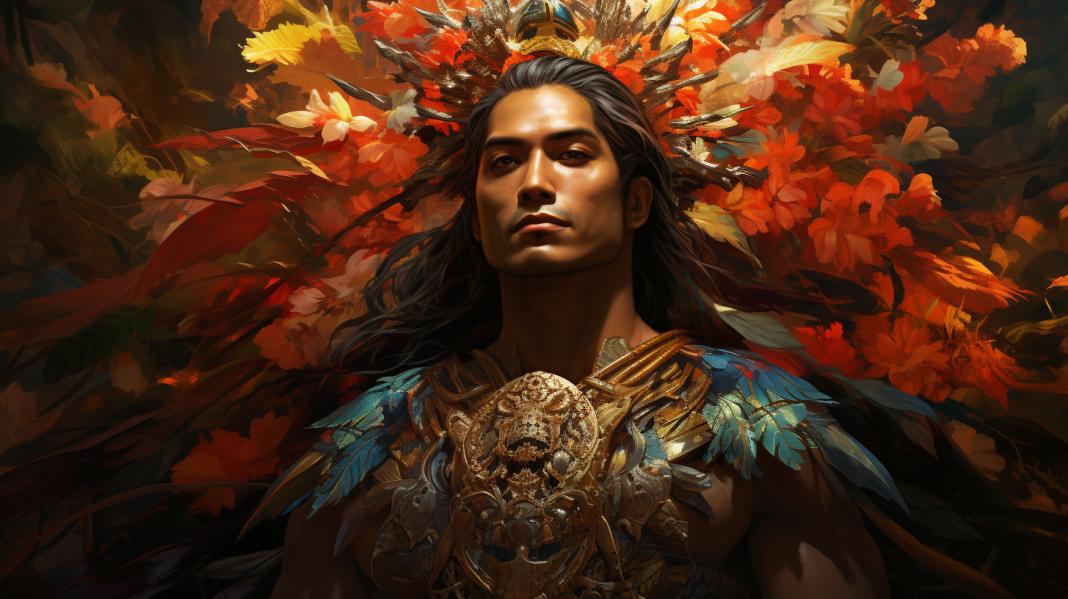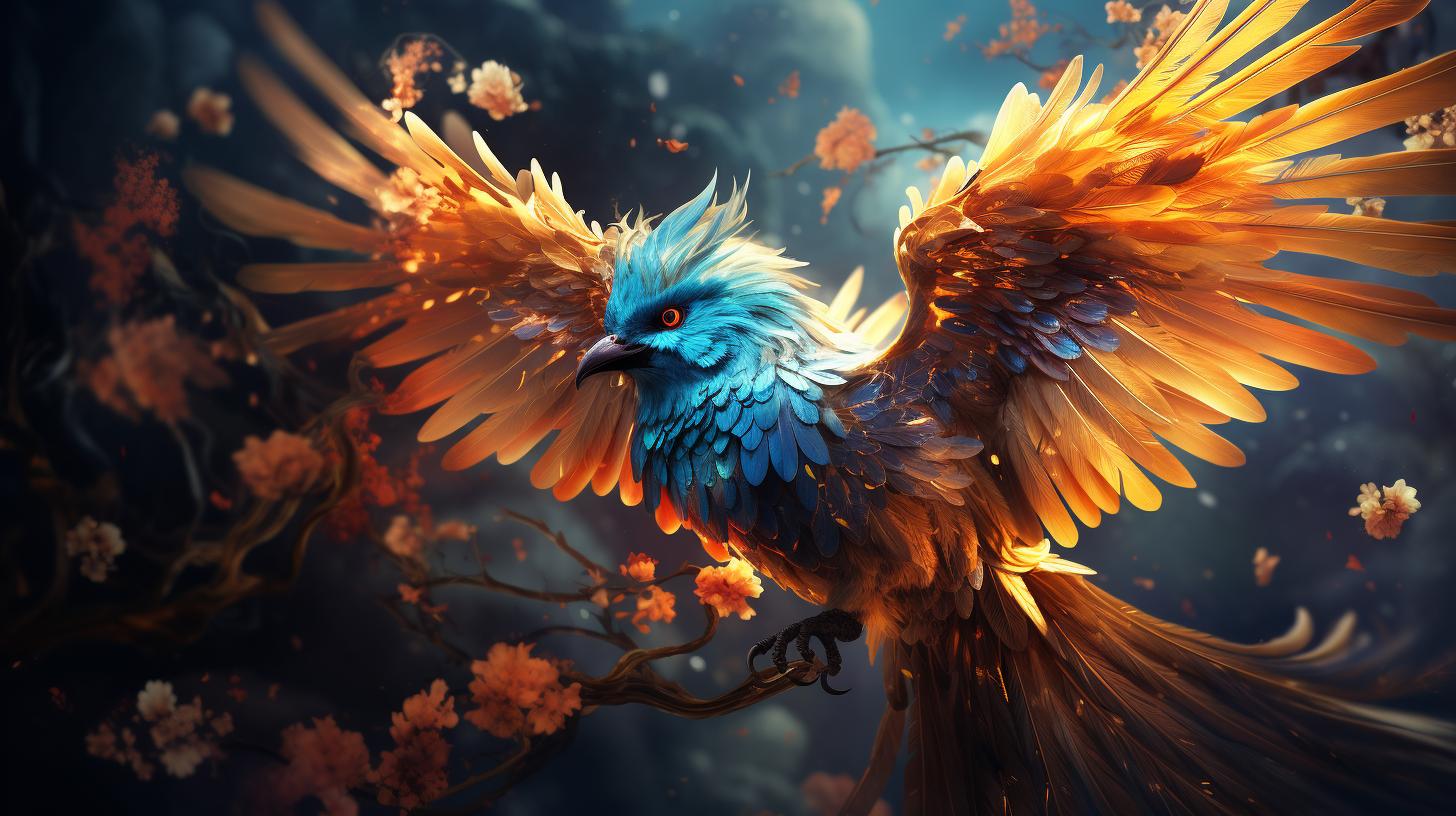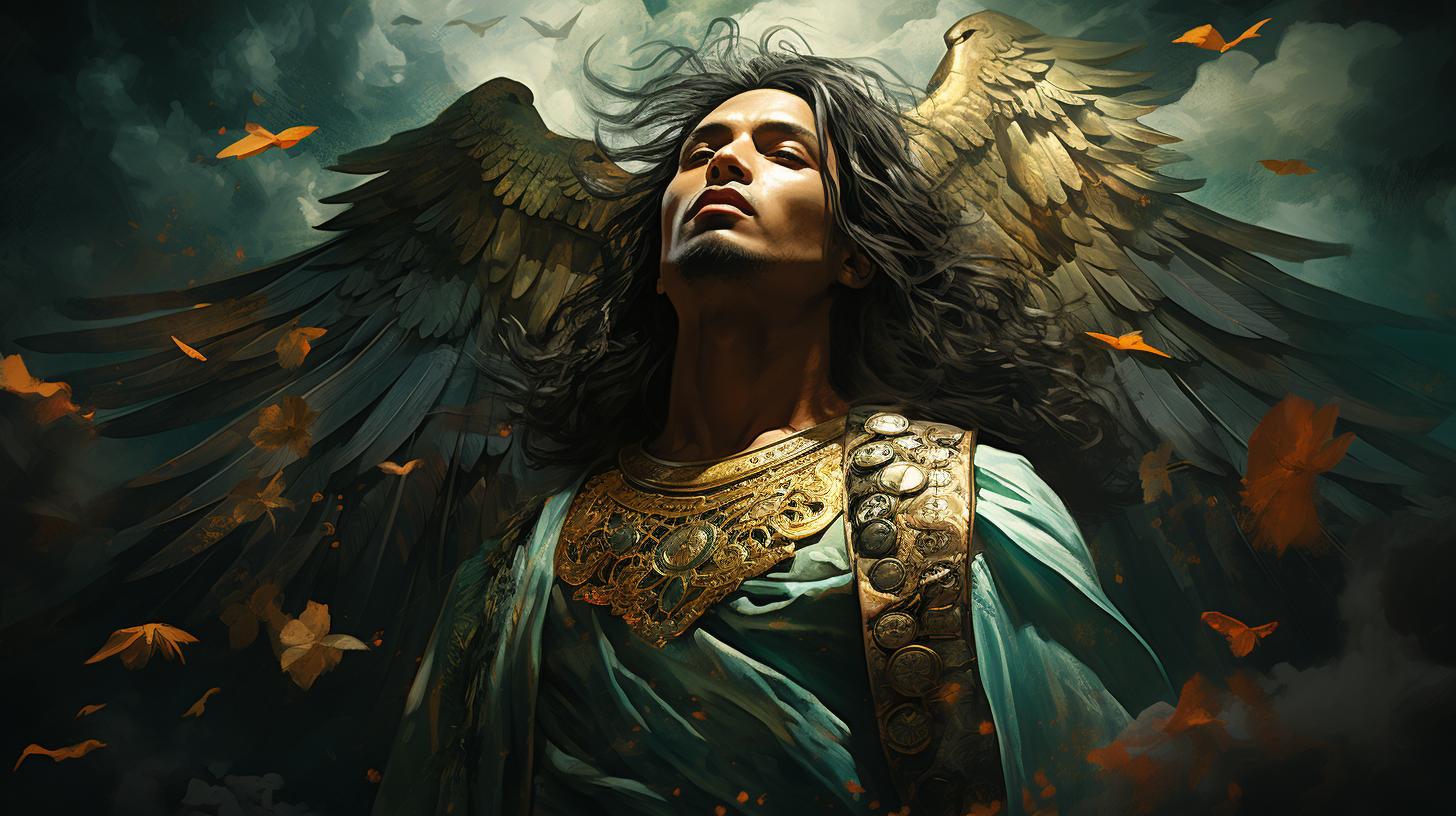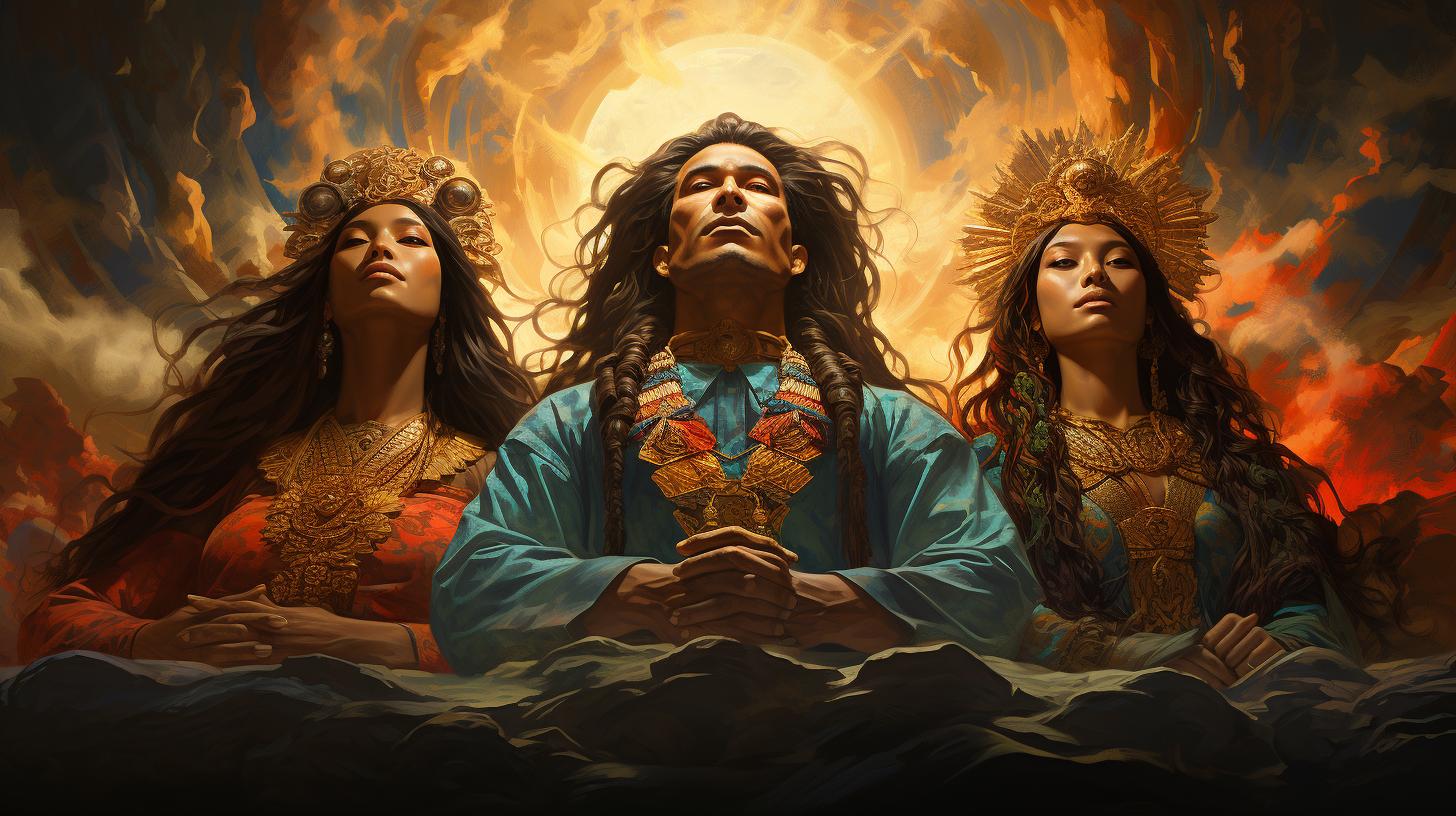Magwayen Goddess: The Powerful Deity of the Sea and Underworld

Magwayen goddess, a prominent deity in Filipino mythology, is revered as the goddess of the sea and underworld. Associated with creation myths and revered alongside Kaptan, the sky god, Magwayen holds the power to cause immense natural disasters when angered.
She is often depicted as a mature and naked woman, carrying a budyong shell and accompanied by her daughter, Lidagat. Magwayen’s significance extends to her role as the ferrywoman of souls, guiding the departed to the underworld.
Despite the influence of Spanish colonization, Magwayen’s fame remains in Bisaya folklore, showcasing the respect and equality accorded to female deities in precolonial times.
The Mythology of Magwayen Goddess
Magwayen, a prominent figure in Filipino mythology, is revered as the goddess of the sea and underworld. Explored through various tales and legends in Talagbusao mythology, Magwayen’s role extends beyond her association with natural elements.
Tales and Legends of Magwayen in Talagbusao Mythology
In Talagbusao mythology, tales and legends about Magwayen abound, showcasing her power and significance in the belief system of ancient Filipinos. These stories provide insights into the character and deeds attributed to Magwayen, granting us a glimpse into the reverence and awe she inspired.
The Role of Magwayen in Creation Myths
Within creation myths, Magwayen assumes a significant role alongside Kaptan, the sky god. It is believed that together, they were responsible for the creation of the world and the first human beings.
Magwayen’s presence represents the feminine aspect of creation, embodying the vast ocean that envelops the entire world.
The Connection between Magwayen and Kaptan
The relationship between Magwayen and Kaptan spans beyond their collaboration in the act of creation. The connection between these two deities runs deep, intertwining their powers and dominions over different realms.
Exploring their interplay sheds light on the intricate cosmology and divine hierarchy of the ancient Bisaya culture.
The Attributes and Representations of Magwayen Goddess
Magwayen, the powerful deity of the sea and underworld in Filipino mythology, is depicted with distinct attributes and symbolism. These representations provide insights into her role and significance within the ancient Bisaya culture.
Magwayen’s Costume and Iconography
Magwayen is often depicted as a mature and naked woman, symbolizing her connection to the primal and natural forces of the ocean. Her nudity represents purity and vulnerability, while her maturity signifies wisdom and authority.
This portrayal emphasizes her role as a motherly figure and provider.
The most prominent attribute associated with Magwayen is the budyong, a sacred conch shell that she carries. The budyong holds great significance, representing both her authority over the seas and her ability to transform into a more powerful form when challenged by sea monsters like the Bakunawa.
The Symbolism of Magwayen’s Conch Shell
The conch shell, or budyong, is a powerful symbol representing Magwayen’s dominion over the sea. It is believed that when she blows into the conch shell three times, she gains the strength to confront and defeat monstrous creatures.
This symbolism highlights her role as a protector against the threats of the deep waters.
Additionally, the conch shell is seen as a sacred instrument used in rituals and ceremonies, signifying communication with the divine.
It serves as a channel for Magwayen’s power and as a means of connecting with other deities and spirits.
Depictions of Magwayen with Lidagat and Fish
Magwayen is often depicted alongside her daughter, Lidagat, who represents the vastness of the ocean. This mother-daughter depiction symbolizes the generational continuity and the cyclical nature of life, emphasizing Magwayen’s role as a creator and sustainer.
In some artistic renditions, Magwayen is surrounded by fish, further reinforcing her association with the sea and its bountiful offerings. The presence of fish symbolizes abundance, fertility, and prosperity. It also serves as a reminder of her power to control and provide for marine life.
- Magwayen’s costume reflects her connection to the natural forces of the ocean
- The budyong, or conch shell, is a symbol of her dominion over the sea
- Depicted with her daughter Lidagat, Magwayen represents generational continuity
- The presence of fish in her depictions signifies abundance and wealth
Through these various representations, the attributes of Magwayen Goddess embody her role as a powerful and complex deity, intricately tied to the sea and its abundant offerings.
The symbolism of her costume, the conch shell, and her relationships signify her authority, nurturing nature, and connection to the forces of creation and life.
Magwayen as the Goddess of the Sea and Underworld
Magwayen, a prominent deity in Filipino mythology, holds dual associations with both the vast expanse of the sea and the mysterious realm of the underworld.
She embodies the immense power and enigmatic nature of these realms, captivating the imaginations of the ancient Bisaya people.
The Dual Association of Magwayen with the Sea and Underworld
Magwayen’s significance lies in her ability to traverse and govern both the sea and the underworld. She is believed to be the personification of the ocean that envelops the entire world, symbolizing the feminine aspect of creation.
This duality in her domain underscores her role as a bridge between the mortal and spiritual realms.
According to Bisaya mythology, Magwayen’s waters flow into the underworld through subterranean rivers.
Her vast oceanic presence connects the realms of the living and the dead, emphasizing her important role as a guide and guardian of souls. This interconnection highlights the cyclical nature of life and death, as well as the eternal flow of energy within the natural world.
Magwayen’s Role as the Ferryman of Souls
Magwayen’s association with the underworld extends to her role as the ferrywoman of souls. She transports the departed from the realm of the living to the realm of the ancestors, ensuring their safe passage to the afterlife.
With her majestic balangay, she navigates the spiritual river Lalangban, which separates Sulad, the purgatory, from Saad, the land of the ancestors.
As the guardian of these spiritual journeys, Magwayen holds significant influence over the fate of the deceased.
She safeguards the souls and eases their transition into the ancestral realm, exemplifying her compassionate and protective nature.
Legends and Myths Surrounding Magwayen’s Journey to the Underworld
Various myths and legends surround Magwayen’s journey to the underworld. One story tells of Magwayen transforming into an underworld goddess after her daughter, Lidagat, died from heartbreak. Following Lidagat’s soul to the purgatory of Sulad, Magwayen became the barquera of souls to remain close to her daughter.
These enchanting tales highlight the complexity of Magwayen’s character and her profound connection with the spiritual realm. Through these legends, the Bisaya people find solace in the belief that Magwayen watches over their departed loved ones and ensures their peaceful transition to the afterlife’s embrace.
The Impact of Spanish Colonization on Magwayen Worship
Replacement of Magwayen by the Veneration of the Virgin Mary
During the period of Spanish colonization in the Philippines, the indigenous beliefs and practices underwent significant changes. The arrival of the Spanish brought with them the introduction of Christianity, particularly the veneration of the Virgin Mary.
This led to the replacement of deities like Magwayen with the figure of the Virgin Mary as the great mother and provider of humanity.
Persistence of Magwayen’s Fame in Bisaya Folklore
Despite the spread of Christianity, the fame and imagery of Magwayen continued to persist in Bisaya folklore.
Stories and legends surrounding her role as the goddess of the sea and underworld were passed down through generations, keeping her presence alive in the cultural consciousness of the Bisaya people.
Gender Equality in Precolonial Filipino Beliefs
One significant aspect of the precolonial Filipino beliefs is the recognition and reverence given to female deities like Magwayen. In contrast to the dominant patriarchal structures and beliefs introduced by the Spanish, the ancient Bisayas demonstrated a level of gender equality by acknowledging and respecting the power and role of female deities in their mythology.
Despite the displacement of Magwayen by the veneration of the Virgin Mary, her influence and significance endure in Bisaya folklore. The stories and legends surrounding her serve as a reminder of the rich precolonial cultural heritage and the respect accorded to female deities in the past.
This understanding of gender equality in ancient Filipino beliefs provides valuable insight into the diverse and inclusive nature of precolonial Filipino society.
Other Mythological Beings Related to Magwayen
Mythology surrounding Magwayen is not limited to her role as the goddess of the sea and underworld. There are several other fascinating mythological beings associated with her, further enriching the folklore of the Bisaya people.
The Myth of Bakunawa: The Giant Sea Serpent
One of the most captivating tales is that of Bakunawa, the giant sea serpent. According to legend, Bakunawa is a powerful creature believed to inhabit the depths of the ocean. It is said that this serpent has the ability to swallow the moon and even cause eclipses.
The myth of Bakunawa often intertwines with Magwayen, as she is known to confront and overcome this formidable sea serpent in epic battles.
Treasures in the Underworld and Marine Life in Tinagong Dagat
The underworld, guided by Magwayen, holds mysterious treasures and fascinating marine life.
Among these treasures lies Tinagong Dagat, a body of water located in the mystical Island of Panay. This enchanted sea is said to be inhabited by various aquatic creatures, including colorful fish and other mesmerizing marine species.
Tales and legends tell of brave adventurers who have ventured into Tinagong Dagat in search of these treasures, facing both danger and wonder in the process.
These mythological beings and their enthralling stories add depth and intrigue to the rich folklore surrounding Magwayen.
The tales of Bakunawa’s power and the allure of treasures hidden within Tinagong Dagat continue to captivate the imagination of both locals and outsiders alike, showcasing the enduring fascination with the mystical in the Filipino culture.
.




















